Back in 1897, the Yerkes Observatory of the University of Chicago (USA) proudly installed the largest refractor telescope known to mankind. With a diameter of 102 centimeters and a focal length of 19.5 meters, this magnificent piece of engineering requires an enormous amount of space within its tower.
Let’s explore the key features of this extraordinary refractor:
1. Gathering Power: This refers to the telescope’s ability to detect faint light sources.
When we consider that the human eye, with a pupil diameter of approximately 0.5 centimeters, can perceive the light of a match from a distance of 30 kilometers on a dark night, we can easily comprehend the immense collecting power of the 102-centimeter refractor compared to the human eye.

Therefore, when a 102-centimeter refractor is pointed at any star, it appears more than forty thousand times brighter compared to when it is observed without any instrument.
2. Another characteristic to consider is the telescope’s resolving power, which refers to its ability to distinguish two closely positioned objects. Since the distances between stars are measured in angular units (degrees, minutes, seconds), the resolving power of the telescope is expressed in angular seconds. For example, the Yerkes refractor has a resolving power of approximately 0.137 seconds.
Essentially, this means that at a distance of one thousand kilometers, the telescope can easily distinguish between two bright cat’s eyes.
3. The final characteristic is amplification. We are accustomed to the presence of microscopes that amplify objects by many thousands of times. However, the situation is more complex with telescopes. On the path to obtaining a clear, amplified image of a celestial body, there are obstacles such as air turbulence in the Earth’s atmosphere, the diffraction of starlight, and optical imperfections. These limitations hinder the efforts of optical experts, resulting in a blurred image. Therefore, while it is possible to increase the amplification, it typically does not exceed 1000. (Speaking of the phenomenon of light diffraction, it is connected to the wave-like nature of light. It manifests as a luminous point, such as a star, being observed as a spot surrounded by a halo of bright rings. This phenomenon sets a limit to the resolving power of all optical instruments).
A refractor telescope is a highly intricate and costly structure. Some argue that refractors of considerable size are impractical due to the challenges involved in their production. Those who doubt this claim should attempt to calculate the weight of the lens in the Yerkes telescope and contemplate methods of reinforcement to prevent the glass from bending under its own weight.
Further Reading
CHAPTER 1. NOT SUFFICIENT FOR YOU, SUFFICIENT FOR ME
One of the many factors that led me to choose physics as my profession was the aspiration to create something enduring, even timeless. If, I reasoned, I were to dedicate so much time, effort, and passion to something, then
4. Reflecting Telescope
4. Refracting telescopes have always had the drawback of the distortion that occurs in the lenses. It is challenging to produce a large, perfectly uniform glass without any bubbles or imperfections. All of these issues are not a concern for reflecting telescopes, which are instruments based on
6. The Meniscus telescope invented by D. D. Maksutov was a groundbreaking addition to the field of ancient science in the 1940s. This Soviet optician and corresponding member of the Academy of Sciences of the USSR proposed a new design that would replace the Schmidt lens, known for its
Telescope
The inventor of the telescope remains unknown. It is speculated that the first rudimentary telescopes may have existed as early as the late 16th century, if not earlier, although their quality was very poor. The earliest documented mention of a telescope, described as “tubes to see far away,” can be found in a patent application filed on September 25th.
122. Who is credited with inventing the telescope?
122. The true inventor of the telescope remains a mystery. It is believed that the first rudimentary telescopes may have existed by the late 16th century, and possibly even earlier. However, the quality of these early devices was extremely poor. The earliest documented mention of a telescope, referred to as “tubes to see far away,” can be found in a patent application filed on September 25, 1608.
123. What is the functioning principle of a telescope? A telescope essentially gathers starlight and focuses it. The eye’s lens performs a similar task, but a telescope gathers more light, resulting in a brighter and more detailed image. Initially, telescopes utilized concave lenses for this purpose. Light
128. When is the planned replacement for the Hubble Space Telescope?
128. When is the anticipated replacement for the Hubble Space Telescope? The Hubble Space Telescope, which currently orbits low Earth, is named after the renowned American cosmologist Edwin Hubble. It was launched in April 1990. Why is space chosen? 1. The sky remains black 24/7. 2. There are no
130. How does a neutrino “telescope” operate?
130. What is the mechanism behind the functioning of a neutrino “telescope”? Neutrinos are subatomic particles that are created during nuclear reactions, such as those that occur in the production of sunlight. A staggering number of 100 million million million neutrinos pass through it every second. One defining feature of neutrinos is their antisocial behavior.
80 Magnifying Telescope
To conduct the experiment, we will require a magnifying telescope for farsighted individuals and a magnifying telescope for nearsighted individuals. The celestial sky is absolutely stunning! However, it is unfortunate that many urban residents have very limited opportunities to observe the stars, which may explain their lack of knowledge about them. It is important to acknowledge the existence of “light pollution,” a term used to describe the interference caused by artificial lighting.
Which metal is the heaviest?
When it comes to identifying the heaviest metal, many people immediately think of lead. While lead is indeed a heavy metal, it is not the heaviest. There are actually other metals that weigh more than lead. For example, mercury is a liquid metal that is heavier than lead. In fact, if you were to drop a piece of lead into mercury, it would not sink but rather stick to the surface. So, while lead is heavy, it is not the heaviest metal out there.
What is the lightest metal? Experts refer to metals as “light” when they are two or more times lighter than iron. The most commonly used lightweight metal in engineering is aluminum, which is three times lighter than iron. Magnesium, on the other hand, is an even lighter metal, weighing 1 1/2 times less than aluminum.
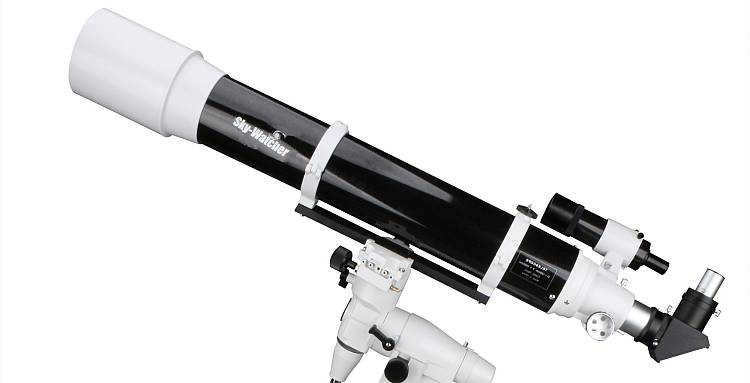
For a beginner astronomer to select the perfect telescope that meets all their requirements, they must acquaint themselves with information on the various types and models of these instruments currently available.
Gaining this knowledge is not a difficult task as there is a vast amount of information readily accessible. To start, it is important to understand the basics of refractor telescopes, which are outlined below.
The refractor is the original telescope that individuals have chosen to point towards the heavens in order to appreciate the stars and other cosmic entities. This instrument emerged nearly four centuries ago. Remarkably, throughout all this time, this device continues to be one of the most widely used and favored telescopes in the field of science. Its merits are acknowledged by both astronomers and manufacturers, as well as everyday users.
One of the main advantages of these devices is their affordability. You can purchase a refractor for as little as 2,000 rubles. Furthermore, it offers other benefits as well. For instance, it provides minimal light scattering, a wide field of view, and is easy to maintain. Additionally, you have the option to purchase a tool with two, three, or even four lenses.
If you enhance this telescope with a specialized diagonal prism, it enables you to observe terrestrial objects in the correct orientation. Overall, experts acknowledge that refractors are an excellent choice for urban observations. This is because these devices handle the strong illumination of large cities quite effectively.
Drawbacks of the refractor
However, the refractor also comes with a few significant disadvantages, prompting manufacturers to continuously develop and create new models in an effort to address them. One of the primary drawbacks is the noticeable colored halo that surrounds observed objects. This not only hampers the full enjoyment of celestial beauty but also obscures many important details. Consequently, this disadvantage often dissuades potential buyers from purchasing such a telescope.
There are other downsides as well. For instance, it has been observed that these devices do not always accurately reproduce colors and shades, which can be problematic even for amateur astronomers. Additionally, there is a need to install a hood after acquiring the instrument to protect it from dew condensation.
Enjoyed this article? Share it with your friends!


In today’s world, telescopes continue to be a primary tool for astronomers, whether they are amateurs or professionals. The main purpose of an optical device is to gather as many photons as possible for the light receiver.
This article will explore optical telescopes, briefly addressing the significance of a telescope’s size, and provide a comprehensive list of the world’s largest telescopes.
Reflectors vs. Refractors
It’s important to understand the distinctions between reflector and refractor telescopes. The refractor telescope, invented by Galileo in 1609, was the first type of telescope. Its operation involves collecting photons through a lens or system of lenses, then reducing and transferring the image to the eyepiece for observation. The aperture, or size of the lens, is a key characteristic of a refractor telescope. Increasing the size of the lens allows for a higher aperture. Additionally, the focal length, which depends on the length of the telescope, is also important. Astronomers have sought to enlarge their telescopes to improve these features.
Currently, the largest refractor telescopes can be found at the following institutions:
- The Lick Observatory (California, USA) was established in 1888 and features a telescope with a diameter of 91 cm.
- Located at the Paris Observatory in Medon, France, is a telescope with a diameter of 83 cm, which was built in 1888.
- Established in 1899, the Potsdam Institute in Potsdam, Germany houses a telescope with a diameter of 81 cm.
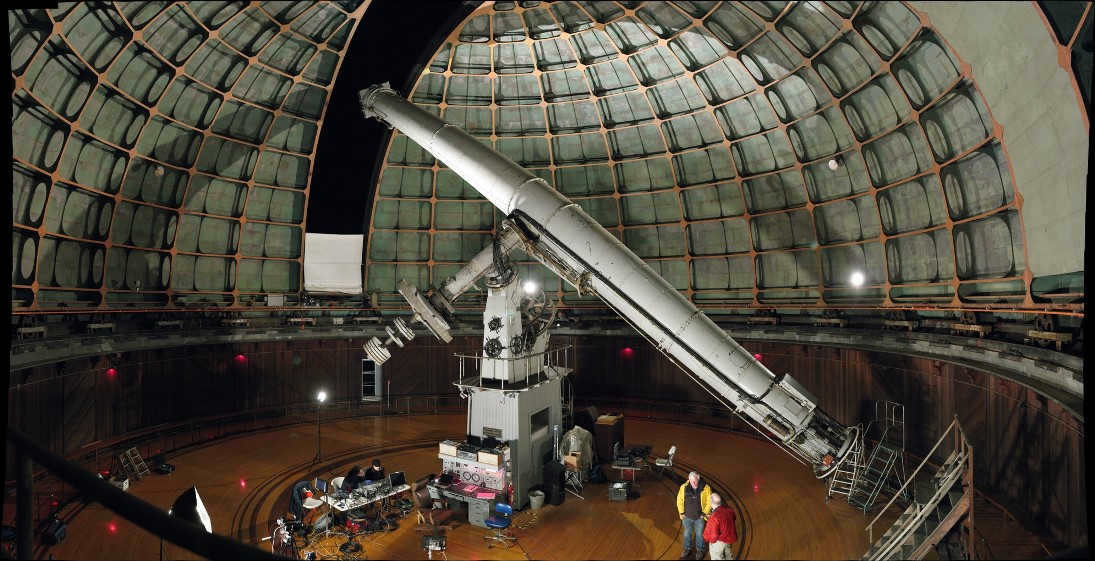
The Lika Observatory is home to a magnificent refractor telescope.
Even though modern refractors have made significant advancements since Galileo’s invention, they still suffer from a disadvantage known as chromatic aberration. In simple terms, the refraction angle of light varies based on its wavelength, causing light of different wavelengths to separate (dispersion) as it passes through the lens, resulting in a blurry and distorted image. Despite ongoing efforts by scientists to improve clarity, such as using ultra-low dispersion glass, refractors still lag behind reflectors in various aspects.
In 1668, Isaac Newton introduced the first reflector telescope. The key characteristic of this type of optical telescope is that it utilizes a mirror as the collecting element instead of a lens. When a photon hits the mirror, it gets reflected onto another mirror, which then directs it into the eyepiece. Reflectors come in different designs with variations in the arrangement of these mirrors, but they all effectively eliminate chromatic aberration, providing a clearer image. Additionally, reflectors can be constructed much larger as refractor lenses with a diameter exceeding 1 m tend to deform under their own weight. Moreover, the material used for refractor lenses significantly limits the range of wavelengths compared to a reflector device.
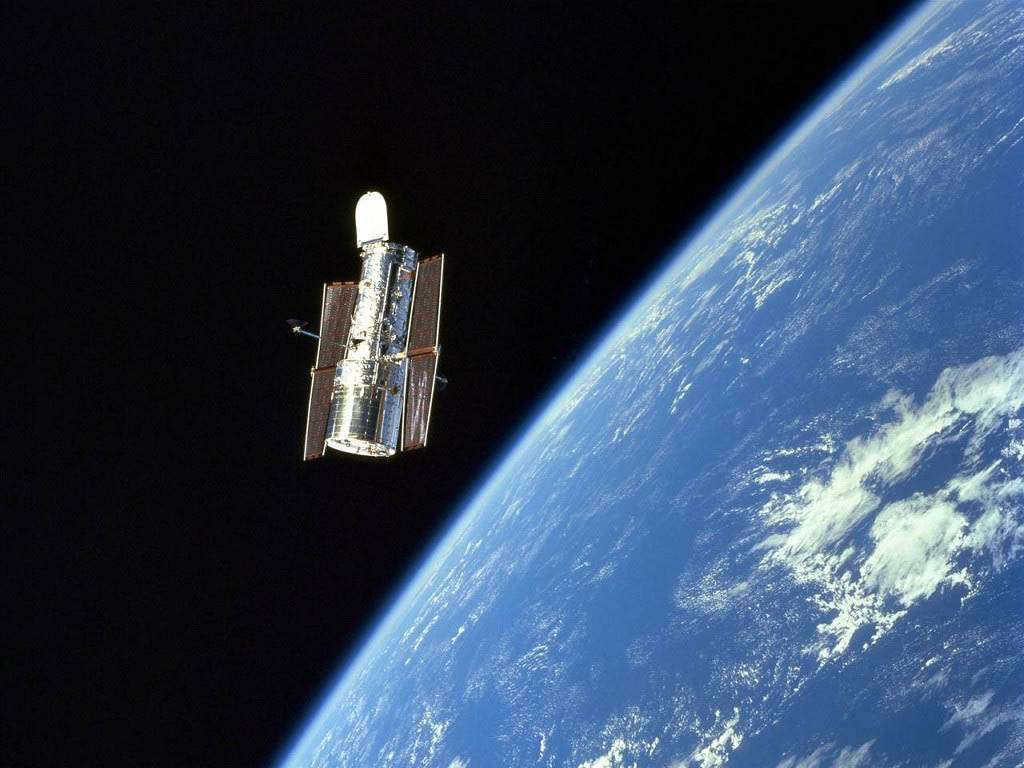
When it comes to reflector telescopes, it is worth mentioning that the size of the main mirror determines its aperture. Astronomers strive to obtain the largest reflector telescopes for the reasons explained above.
Compilation of the biggest telescopes
Let’s explore seven groups of telescopes equipped with mirrors larger than 8 meters in diameter. We have attempted to categorize them based on their aperture, but this is not the sole determinant of observing quality. Each of these telescopes possesses its own advantages and disadvantages, as well as specific tasks and characteristics required for their respective purposes.
- The Giant Magellan Telescope is set to be constructed in Chile, at an elevation of 2,516 meters, and is scheduled to be completed by 2022. It will consist of seven mirrors, each with a diameter of 8.4 meters, resulting in an effective aperture of 24.5 meters. The total collecting area will be 368 square meters. In terms of resolution, the Giant Magellan Telescope will be ten times more powerful than the Hubble Telescope, and its light-gathering capability will be four times greater than any other modern optical telescope.
- electronic units;
- control systems;
- data acquisition modules;
- hydroacoustic components.
- Exploration and identification of distant sources of radio waves;
- Investigation of the characteristics of radio emission from the Sun and other stars;
- Search for potential artificial signals from remote areas of space;
- Examination of magnetic fields on and around the Sun;
- Aiding in the examination of the planets in the solar system, their moons, asteroids, and comets.
The title of the largest optical telescope in the world belongs to the Large Canary Telescope. This impressive telescope was unveiled in 2007 and boasts a mirror diameter of 10.4 meters, a collecting area of 73 m², and a focal length of 169.9 meters. The telescope is housed at the Observatorio Roque de los Muchachos, which is perched atop the extinct volcano Muchachos on the picturesque Palma Island in the Canary Islands. At an elevation of approximately 2,400 meters above sea level, this location offers a prime astroclimate, making it the second-best site for astronomical observations, only surpassed by Hawaii.
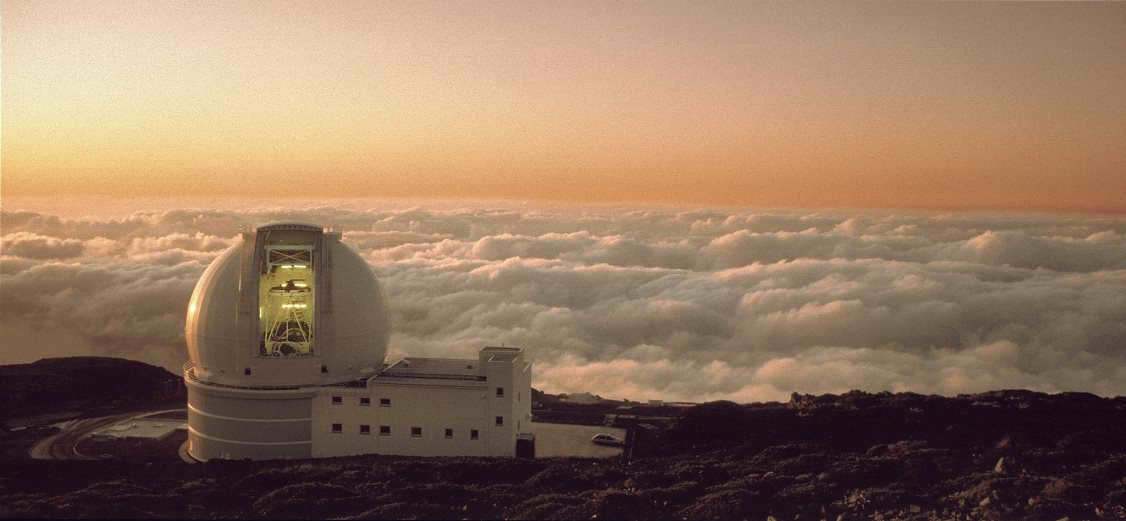
The Grand Canary Telescope holds the title for being the biggest telescope globally.
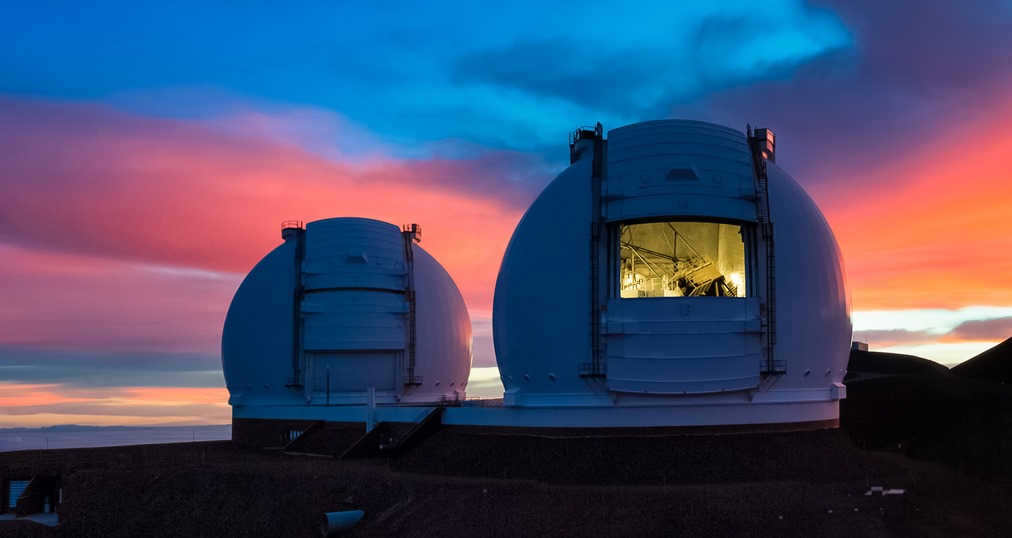
The Keck Telescopes are a remarkable sight to behold.
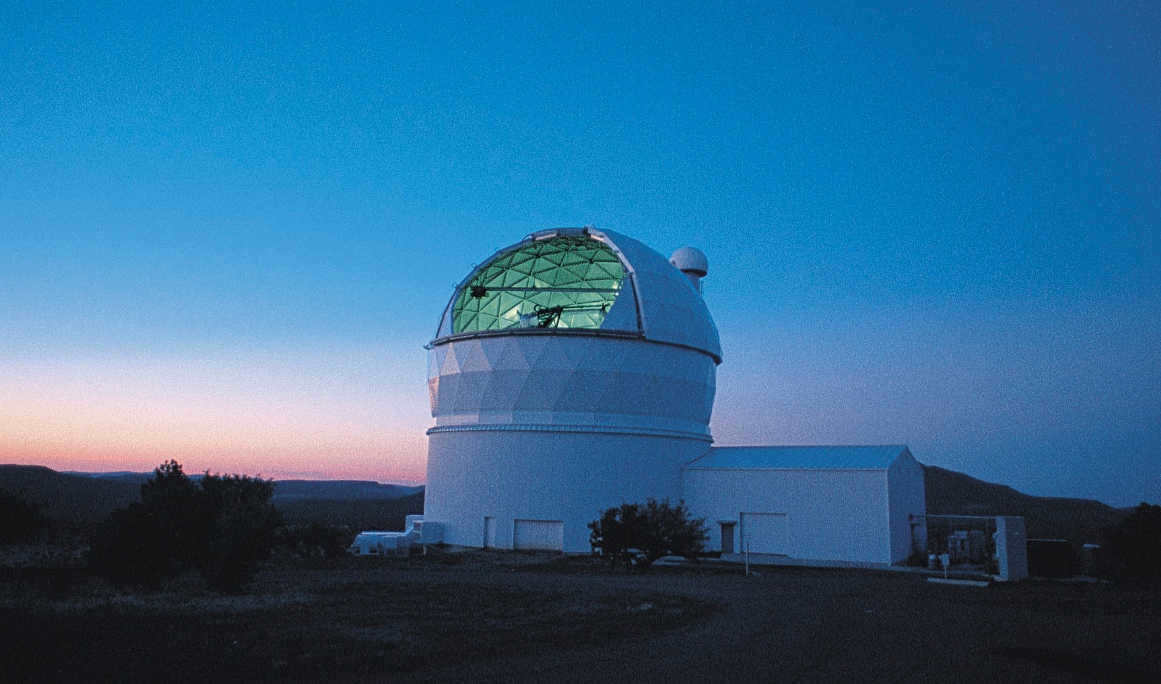
Hobby Telescope – Eberly
can be paraphrased as
Eberly – A Telescope for Hobbyists
.

The South African Telescope is an incredibly large telescope located in South Africa.
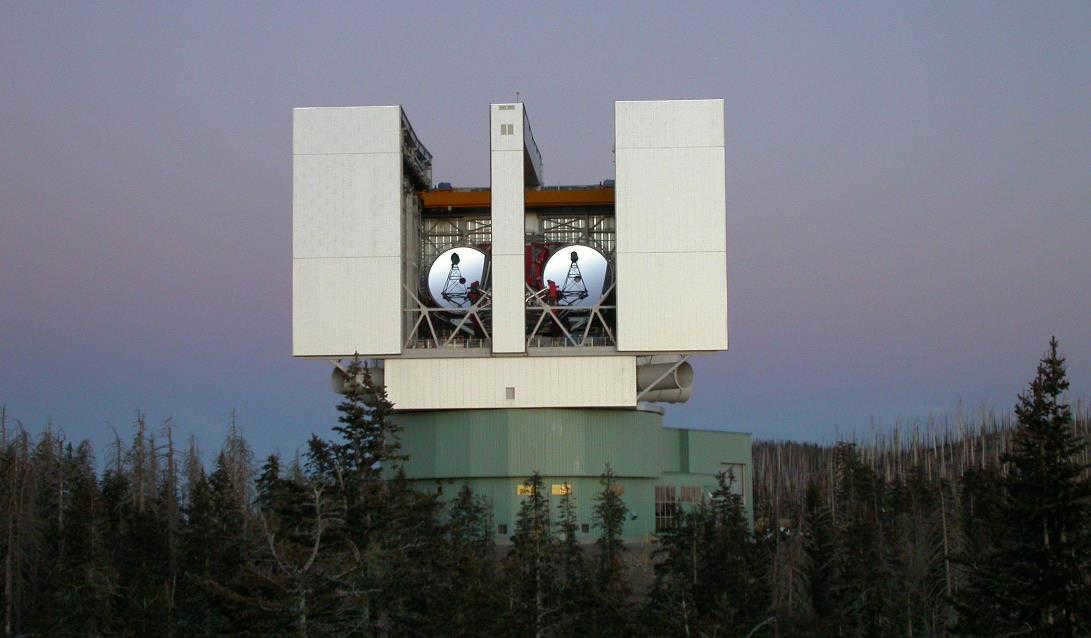
The Large Binocular Telescope is a massive refractor telescope.
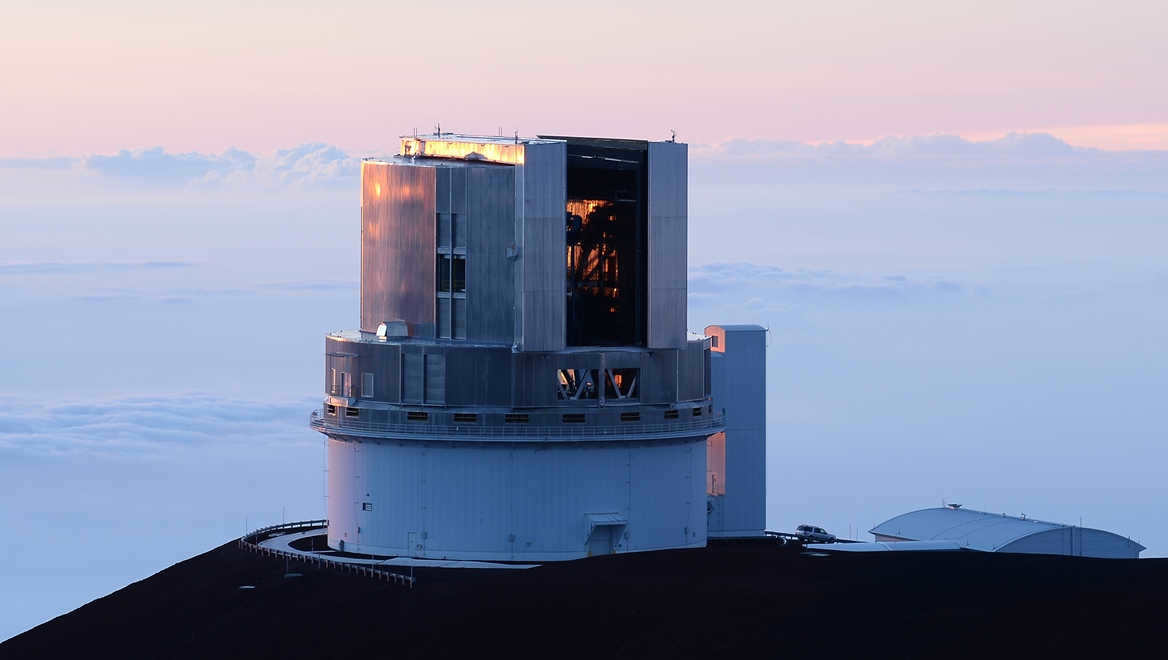
The Subaru Telescope is a state-of-the-art astronomical observatory located in Hawaii.
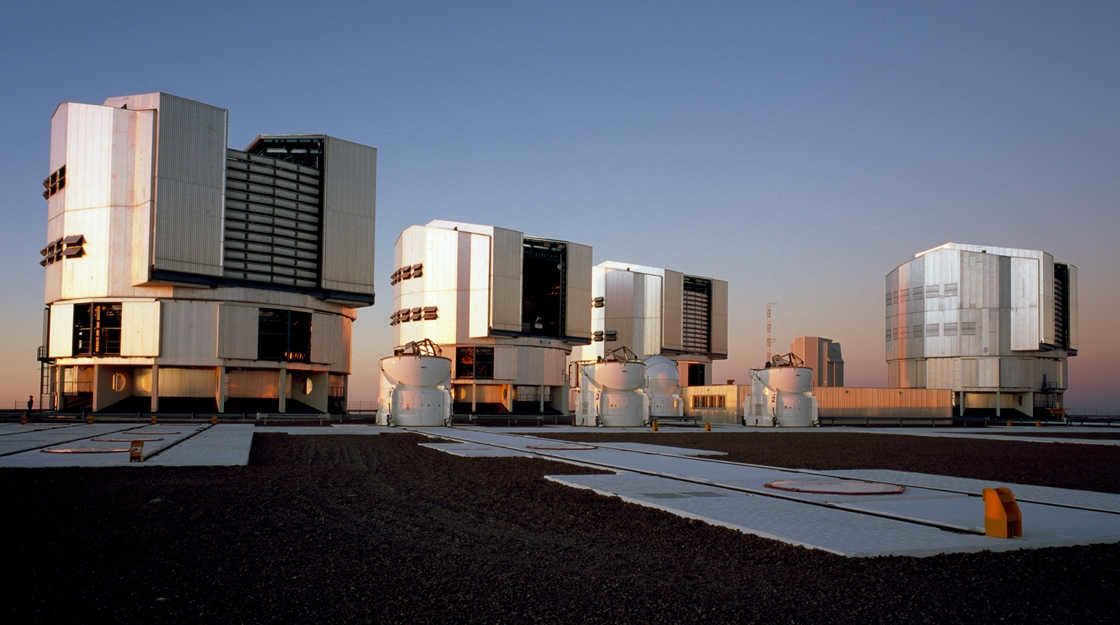

“The VLT is an extremely large telescope that is currently under development.”
Focus of Development
Given the energy-intensive and costly nature of constructing, installing, and operating massive mirrors, it is logical to seek alternative methods for improving observation quality that do not involve simply enlarging the telescope itself. Consequently, scientists are actively researching advancements in observation technologies. One such technology is adaptive optics, which aims to reduce image distortion caused by atmospheric phenomena.
Specifically, the telescope focuses on a sufficiently bright star to assess the prevailing atmospheric conditions, and then processes the resulting images to account for the current astroclimate. In instances where there are no stars of adequate brightness in the sky, the telescope emits a laser beam, creating a spot in the atmosphere. By analyzing the characteristics of this spot, scientists can determine the existing atmospheric conditions.
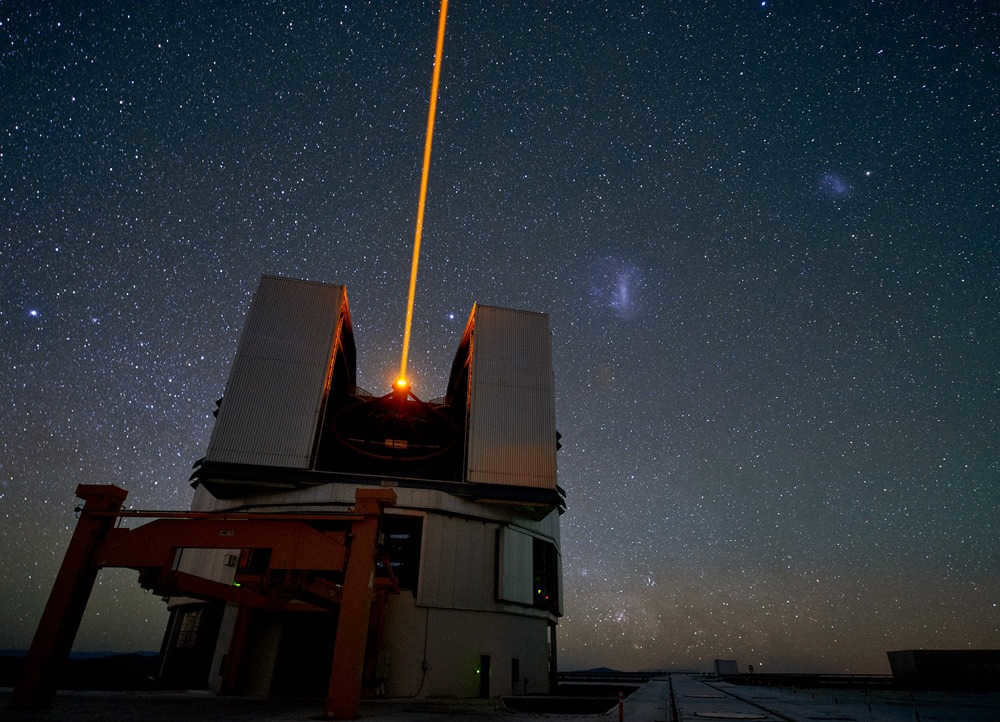
Adaptive optics using laser technology
Additionally, some optical telescopes are capable of operating in the infrared range of the electromagnetic spectrum, enabling astronomers to gather more comprehensive data about the celestial objects they study.
Upcoming Telescope Projects
The field of astronomy is constantly advancing, and there are several ambitious projects for new telescopes that are currently in development.
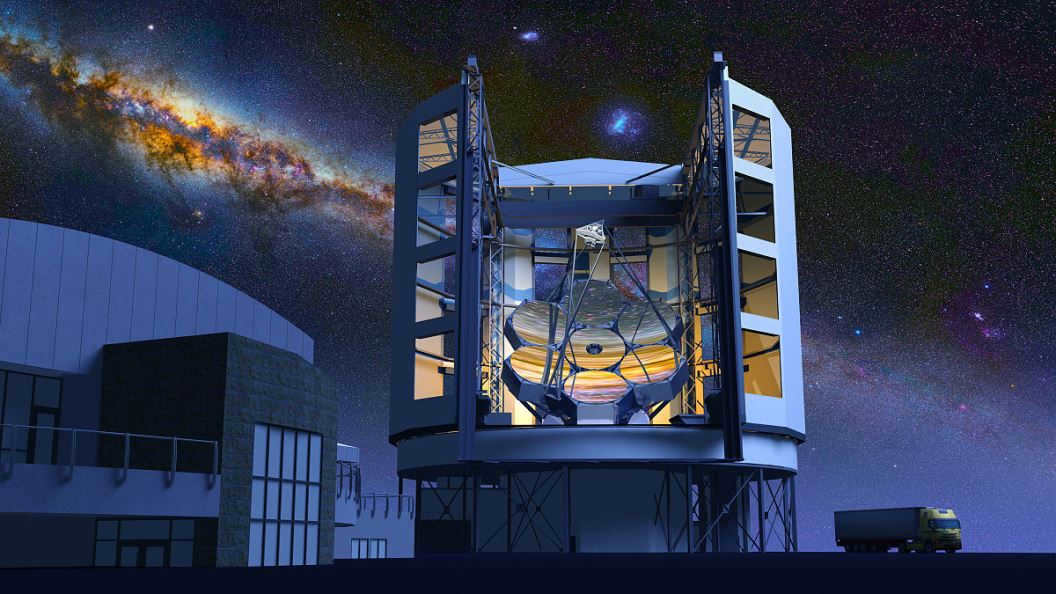
A sketch of the Giant Magellan Telescope is shown in the image above.


Sketch of a Thirty-meter telescope
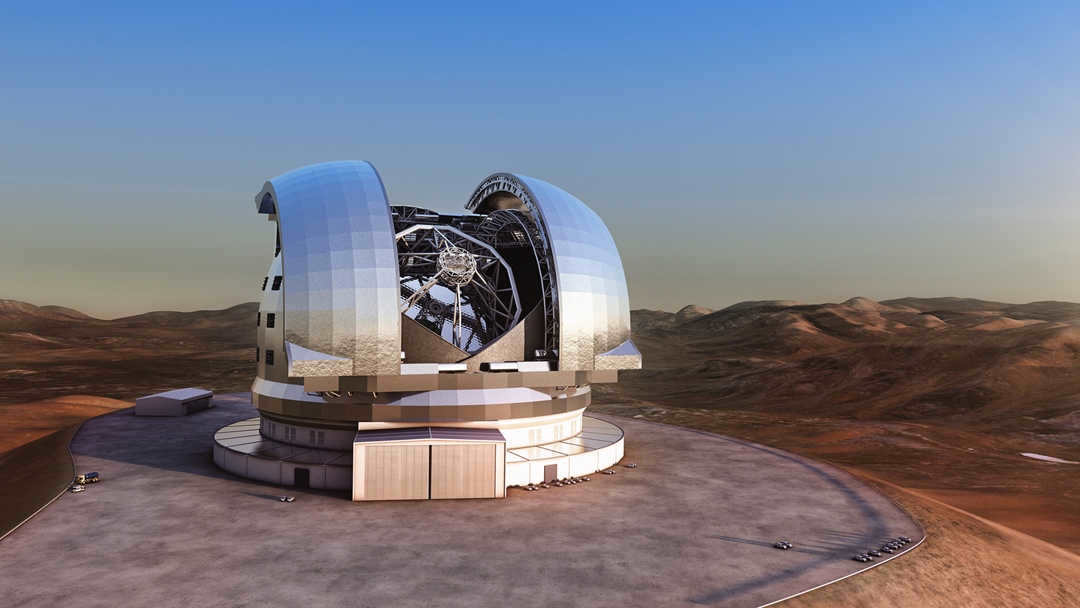
The European Extremely Large Telescope is the largest refractor telescope in Europe.

These telescopes surpass the visible spectrum and have the ability to capture images in the infrared range. When comparing these ground-based telescopes to the Hubble Telescope in orbit, scientists have successfully overcome the obstacle of atmospheric interference and have even outperformed the powerful orbiting telescope. The aforementioned instruments, along with the Large Binocular Telescope and the Large Canary Telescope, will all be part of a new generation of Extremely Large Telescopes (ELT).
View the photograph in a larger format
This page is dedicated to the most enormous telescopes, the initial ones, and the most potent telescopes globally. We are all familiar with observing the universe with our unaided eyes, but it is always fascinating to explore the concept of observing it with enhanced vision. It is intriguing to comprehend the extent of humanity’s ability to delve into the depths of the cosmos.
However, determining which telescope holds the title of being the most powerful, largest, and sharpest is not a straightforward task.
The most colossal optical telescopes
The most massive radio telescopes
The telescope with the highest potency
The ultimate telescope
The pioneering telescopes
The biggest optical telescopes
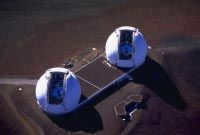
The most colossal telescope, or rather there are three of them. The initial two are the KECK I and KECK II telescopes at the Mauna Kea Observatory in Hawaii, USA. They were constructed in 1994 and 1996. The size of their mirrors is 10 meters. They stand as the most extensive telescopes globally in the optical and infrared bands. KECK I and KECK II have the capability to collaborate in the interferometer mode, providing an overall angular resolution comparable to that of an 85-meter telescope!
It is due to the interferometer mode that this duo of telescopes claims the top spot globally in numerous optical parameters that stargazers require.
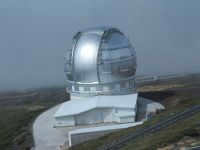
Another telescope, similar to the KECK I and KECK II, was constructed in 2002 in the Canary Islands. Known as the Gran Telescopio CANARIAS (GTC), it is situated at the La Palma Observatory atop the Muchachos volcano at an elevation of 2400m above sea level. With a mirror diameter of 10.4m, it is slightly larger than the KECKs. It appears that the largest single telescope remains the largest single telescope.
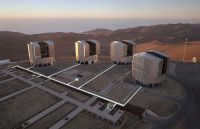
In the mountains of Chile, in 1998, a consortium of European countries came together to construct the “Very Large Telescope” (VLT). This impressive observatory consists of four telescopes, each equipped with an 8.2-meter mirror. When all four telescopes are operating in unison, their combined power is equivalent to that of a single 16-meter telescope. The European Southern Observatory (ESO) captured this stunning image.
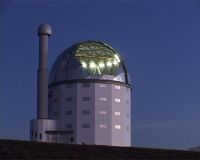
Additionally, I would like to mention the impressive South African Telescope SALT, which boasts a massive mirror measuring 11×9.8m. It holds the esteemed title of being the largest telescope in the Southern Hemisphere. The telescope’s precise coordinates are 32°22′33″S 20°48′38″E. Situated at an elevation of 1783 meters above sea level, this powerful instrument is located 370 kilometers northeast of Cape Town, near the charming town of Sutherland. It is worth noting that the actual usable surface of its mirror is slightly smaller than its impressive 10m diameter. (Unfortunately, I do not have data on the usable area of KECKs and GTCs).
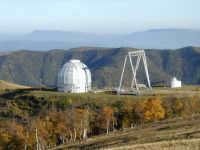
The Bolshoi Telescope Alt-Azimuthal (BTA) is the largest telescope in Russia. It is situated in Karachay-Cherkessia and features a 6-meter diameter mirror. Constructed in 1976, it held the title of the world’s largest telescope from 1975 to 1993. Currently, it ranks among the top ten most powerful telescopes worldwide. An interesting aspect of this telescope is its use of the largest monolithic mirror. Subsequent giant telescopes adopted a prefabricated mirror design, comprised of individual elements.
In the competition for the prestigious title of the world’s largest telescope, several installations have been mentioned as contenders. The determining factors for this title can vary, including the diameter of the single mirror, the angular resolution, the brightness of the image, or the number of mirrors.
The most immense radio telescopes
Radio telescopes must not be overlooked. They surpass optical telescopes in size and offer a unique ability to capture images of celestial objects in the radio frequency range. Their angular resolution far exceeds that of optical telescopes, reaching levels previously inconceivable. However, it is worth mentioning that not all astronomical objects emit radio waves.
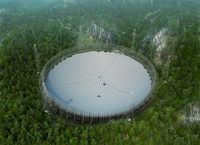
The FAST radio telescope, situated in China’s Guizhou province, boasts a diameter of 500 meters. It was successfully deployed in September 2016 and, similar to the Arecibo radio telescope, is nestled within a mountainous basin. This exceptional observatory stands at an altitude of 1000m above sea level, in an isolated region. Notably, it holds the distinction of being the world’s largest aperture-filled telescope, boasting a solid mirror that exceeds the scanning speed and “sensitivity” of the Arecibo telescope. Furthermore, each element of its mirror can be rotated, enabling a deviation of ±40° from the zenith for scanning the sky.
The Arecibo Observatory in Puerto Rico houses a spherical bowl telescope with a diameter of 304.8 meters. It operates across wavelengths ranging from 3 cm to 1m and was constructed in 1963. From 1963 until 2016, it reigned as the largest single-mirror telescope in the world.
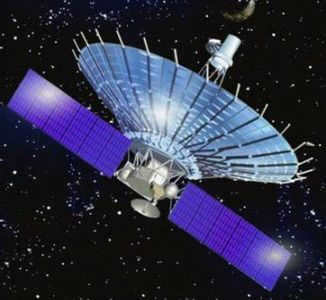
The most advanced telescope
So, which telescope can be considered the most advanced? It’s a difficult question to answer because different telescopes excel in different areas. Some prioritize angular resolution, while others focus on capturing the most light. Additionally, there are telescopes that specialize in observing in the infrared, radio, ultraviolet, and X-ray ranges.

If we limit ourselves to the visible range alone, one of the most renowned telescopes would be the famous Hubble Space Telescope. With a diameter of only 2.4 meters, its resolving power is 7-10 times higher than it would be if it were situated on Earth, thanks to the almost complete absence of atmospheric interference.
Now, picture the incredible images that would be captured by the largest and most powerful optical telescopes on Earth, such as KECK I and II or VLT, if they were positioned on the Moon, where there is absolutely no trace of Earth’s atmosphere! This is precisely why astronomers fantasize about space observatories stationed on planetary satellites.
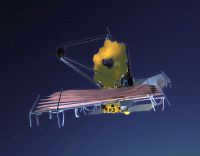
The James Webb Telescope – JWST is set to replace the Hubble in 2018. This remarkable telescope is a collaborative effort between the USA, Canada, and the European Space Agency.
The mirror of the James Webb telescope will be composed of multiple parts and will have a diameter of approximately 6.5 meters, with a focal length of 131.4 meters.
It is planned for this advanced space telescope to be positioned in the Earth’s permanent shadow, specifically at the Lagrangian point L2 of the Sun-Earth system.
Initially, the James Webb Telescope was expected to have a lifespan of 5-10 years, but its launch has faced several delays. The current estimate is for the telescope to be launched in March 2021.
Incidentally, the most optimal telescope in this situation might surprisingly be a less extravagant telescope situated at the polar station in Antarctica. In theory, it has the potential to provide an image quality that is not as superior, but nevertheless comparable to that of a more advanced telescope, simply because the object will be positioned at a significantly higher point above the horizon.
Undoubtedly, it is challenging to rival the VLT’s 16-meter mirror. However, when you take into account the significantly reduced distortion caused by the thinner atmosphere and the equipment’s drastically lower cost, it becomes evident that the Antarctic telescope offers a compelling alternative.
The initial telescopes in history
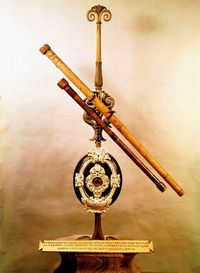
Keppler expanded the field of vision by substituting the dispersing lens in the eyepiece with a lens that gathers light. However, the issue of chromatic aberration persisted. As a result, early refractor telescopes addressed this problem in a rather straightforward manner – by decreasing the relative aperture, which essentially means increasing the focal length.
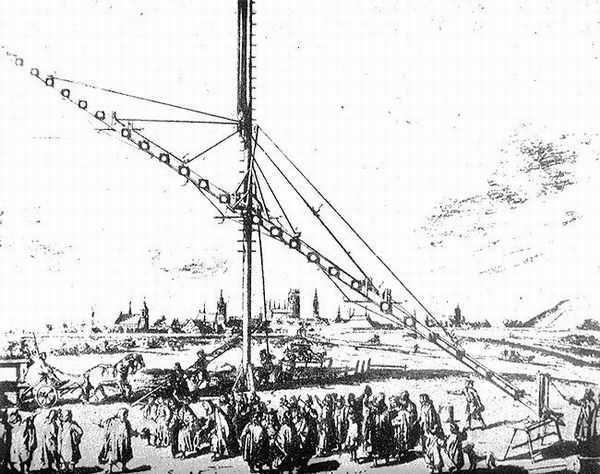
As an illustration, Jan Hevelius had a telescope that measured a whopping 50 meters in length! This impressive instrument was suspended from a pole and controlled using ropes.
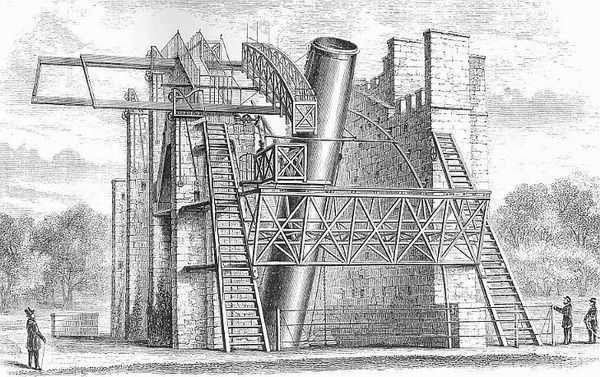
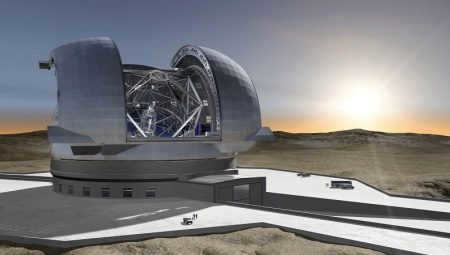
Many people are greatly impressed and inspired by the largest and most powerful telescopes in the world and in Russia. However, it is crucial to possess unbiased information about the incredibly powerful European models. Furthermore, it is pertinent to be aware of the location of the binocular large telescope and other significant instruments that observe the cosmos.
Enormous Musical Instruments Around the World
Let’s start our exploration of the largest telescopes with an instrument known as the Extremely Large Telescope, or ELT. Situated near Chile’s Paranal Observatory, specifically in the Mount Armasones area, this extraordinary device is not only capable of optical observations but also has the ability to capture the near-infrared spectrum. With a dome weighing a staggering 2,800 tons, the ELT is scheduled to commence operations in 2025. Its diameter will measure an impressive 39.3 meters and it will be outfitted with advanced adaptive optics. The effective area of this instrument will cover an extensive 978 square meters, while its focal length will range from 420 to 840 meters.
An optical system with 5 stabilizing mirrors will be exceptionally intricate. This advanced system is set to provide even greater detail than the renowned Hubble telescope.
However, there are several other ambitious telescope projects currently in progress on Earth. One such project is also taking place in Chile, but it is now an American endeavor instead of a European one. This telescope will be situated at the summit of Cerro Pachón mountain. It will feature a reflector design, with a mirror size of 8.4 meters. The completion of the Cerro Pachón project is scheduled for 2022. Unlike the standard 2 mirrors, LSST will incorporate 3 mirrors, further expanding its capabilities.
The Southern African Large Telescope (SALT) holds the record for the largest diameter telescope in the southern hemisphere. Situated at an altitude of nearly 1800 meters above sea level, this device is utilized by the primary observatory in South Africa. One of the major advantages of SALT is its capability to observe celestial objects that are not visible from the northern hemisphere. The working mirror of SALT measures 11×9.8 meters and has been instrumental in numerous important discoveries since its inception in 2005.
On the Hawaiian Islands, there are two telescopes named Keck I and Keck II, which bear striking similarities in their names. Both telescopes have identical mirror diameters of 10 meters and share virtually identical technical parameters. This is not a mere coincidence, as these telescopes operate in interferometer mode, enabling enhanced precision in their observations.
The Canary Islands host the Gran Telescopio Canarias, which has been operational since 2009. The telescope features a mirror with a cross-section of 10.4 meters and is situated on the summit of the Muchachos volcano, at an elevation of approximately 2.4 km above sea level. This impressive instrument allows for the monitoring of even the most distant regions of outer space.
In contrast to the Gran Telescopio Canarias, the Hubble Space Telescope is the largest orbiting telescope. It boasts a main mirror with a cross-section measuring 2.4 meters. The Hubble orbits at an altitude of 569 km and has been conducting observations since 1990. Despite undergoing five technical maintenance missions, it continues to operate reliably.
The southeast region of Arizona (USA) is home to the impressive Large Binocular Telescope. This remarkable device is considered to be the most advanced of its kind when it comes to resolution. It is utilized by the dedicated team at the Mount Graham Observatory. The telescope is comprised of a pair of parabolic mirrors, each with a cross-section of 8.4 m. The distance between the mirrors is 14.4 m, and together they function as a single mirror with an impressive magnitude of 11.8 m. In interferometer mode, the telescope provides an equivalent of 22.8 m.
The secondary parabolic mirrors have a cross-section of 0.911 m and are incredibly thin, measuring only 1.6 mm. The telescope also features magnetic adaptive correction to compensate for atmospheric disturbances. This unique design offers significant advantages.
China does not have a rich history of producing optical astronomical instruments. However, China is home to the largest radio telescope in the world. This radio telescope has a massive effective mirror measuring 500 meters in size. The size of this instrument greatly enhances its capabilities, but it is also equipped with a unique type of surface that significantly broadens its range in the radio spectrum. The primary focus of research conducted with this telescope is the study of pulsars, and potentially, in the future, the study of black hole shadows.
In addition, Chinese experts plan to utilize this device for researching FRB bursts, which are currently not well understood. The nature of this phenomenon remains uncertain. It is possible that in the future, the Chinese radio telescope will become part of a global initiative focused on detecting signals from beyond Earth. The previous largest radio telescope in Europe and Eurasia was constructed during the 20th century, specifically in the Caucasus region.
The biggest instruments in Russia
The biggest telescope in Russia is the BTA (Bolshoi Teleskop Azimutalny). Situated near the village of Nizhny Arkhyz, at an elevation of approximately 2.07 km, this instrument has been dedicated to the exploration of the cosmos since the late 1975. With a mirror diameter slightly exceeding 6 meters, it boasts an effective surface area of 26 square meters and a dome height of 53 meters.
Until 1993, the BTA held the title of the biggest optical telescope globally. It continued to be the leader in the subgroup of astronomical instruments with monolithic mirrors for an additional five years. Despite the emergence of more advanced observing instruments in other countries, the BTA remains determined to maintain its position as the most significant telescope in terms of both mirror size and dome size. The main challenge initially stemmed from the substantial temperature inertia of the primary light receiver. Efforts are being made to overcome this obstacle by implementing cooling systems.
The visibility is greatly reduced due to the turbulent nature of the atmosphere in the North Caucasus, which leads to underutilization of the BTA’s potential. However, despite these challenges, the importance of this telescope cannot be understated. It is primarily utilized for spectroscopy and spectrum interferometry. Nevertheless, the list of cutting-edge Russian telescopes does not end here.
The next addition to this list is the Baikal-GVD facility. This facility, strictly speaking, is not a traditional telescope but rather a collection of deep-sea detectors held in place by floats and steel cables. Additionally, the device includes:
The device can only function normally during the winter season. During this time, the frozen surface of the lake acts as a neutrino detector and allows the system to accurately determine the locations where these particles have appeared.
Baikal-GVD does not compete with the well-known IceCube, but instead works closely in conjunction with it. These complexes are designed to observe different parts of the sky.
Another notable device is the RATAN-600 radio telescope. It is situated near the village of Zelenchukskaya in Karachay-Cherkessia. This telescope, with a receiving node cross-section of 576 meters, has been in operation for 47 years. Located at a height of 0.97 km, the radio telescope captures waves ranging from 8 to 500 mm. The main objectives of RATAN-600 include:
When it comes to optical instruments, the MTM-500 meniscus telescope stands out. It has a compact 0.5 meter main mirror, yet manages to achieve a focal length of 6.5 meters. The optical system of this device is designed based on the Maksutov system. Unfortunately, Russia currently lacks particularly large instruments for visible range observation.
The most advanced telescopes
However, the issue of telescope power cannot be solely determined by their size. Thanks to its position in space, the comparatively compact Hubble telescope operates flawlessly. Its diameter does not exceed 2.4 meters. In comparison, a telescope with a similar capability on Earth would have a diameter of 16.8-24 meters. The James Webb project, set to replace the Hubble, is still awaiting launch and its utilization raises apprehensions.
The benefit is also the high level of durability, resulting in a very low probability of breakage.
If you are looking for an alternative, consider the Celestron AstroMaster 130 EQ-MD. Its primary feature is a parabolic mirror, which perfectly relates the focal length to the cross-section of the lens. The AstroMaster’s eyepieces allow for 65 times magnification of the image. Additionally, the StarPointer viewfinder significantly simplifies aiming at desired locations in the sky.
For those who prefer refractors, the Veber PolarStar 900/90 EQ8 is worth checking out. It contains an achromatic type of lens that is enlightened on the inside. This device is capable of gathering a large amount of light, resulting in a sharp and colorless image. Pointing is achieved with micrometric accuracy simultaneously along 2 axes.
The Celestron AstroMaster 90 AZ refractor performs admirably as well. Its focal length is nearly ideal, providing clear views of the contents of galaxies without overwhelming details. The built-in star diagonal ensures that the images are not flipped, and the device strikes a good balance between quality and cost.
Another offering from Celestron is the NexStar 102 SLT model. The NexStar 102 SLT is essentially a computer and has the ability to save all previous settings. Users can program specific settings for objects within a certain category, and the azimuth mount is fully automated. The optics are treated with a multi-coating technique, enhancing their performance.
There are alternative options available for amateur astronomers when it comes to powerful telescopes. However, it is important to carefully consider the maximum useful magnification of the telescope before making a choice. The term “useful” is not used lightly.
From a physical optics perspective, it is not particularly difficult to exceed this limit. However, the resulting image quality will be disappointing.
Some manufacturers may claim that their products can magnify up to 400 or even 600 times. However, these figures are clearly exaggerated. Realistically, achieving such high magnification requires an aperture of at least 30 cm. Even then, the Earth’s atmosphere will significantly distort the image. It is also important to consider one’s actual needs:





